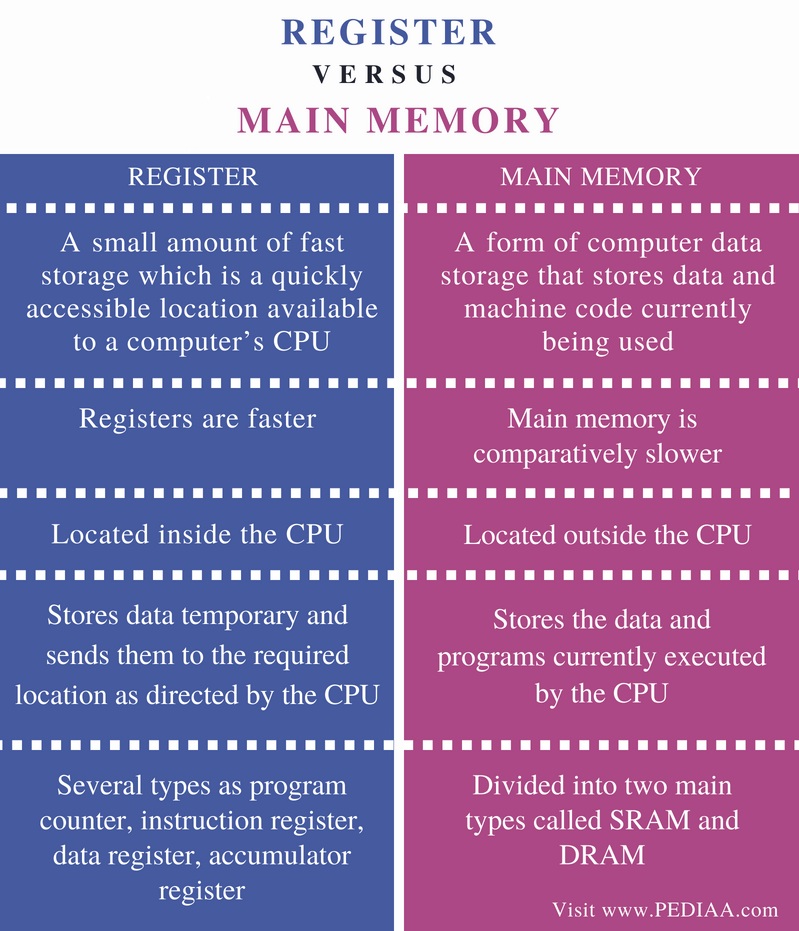Difference Between Serial And Random Access Memory Images

In the car, it's best to attach the HCB-100 to your vehicle's sun-visor, but while in the office, it can be placed on a desk and used as a speaker phone for conference calls. In our tests, with fairly extensive usage, we found the battery to last just over half of these claimed figures -- well down on its competitors. Sony ericsson hcb 100 manual pdf download. The SE Web site claims that the battery lasts for 15 hours of talk time and close to 350 hours on standby.
So, what are RAM, ROM, and flash memory? All three are kinds of computer memory, but RAM, ROM, and flash memory interact each in their own way with the.
Random Access Memory is volatile. That means data is retained in RAM as long as the computer is on, but it is lost when the computer is turned off. When the computer is rebooted, the OS and other files are reloaded into RAM, usually from an HDD or SSD.

What Random Access Memory is used for Because of its volatility, Random Access Memory can't store permanent data. RAM can be compared to a person's short-term memory, and a hard drive to a person's long-term memory. Short-term memory is focused on immediate work, but it can only keep a limited number of facts in view at any one time. When a person's short-term memory fills up, it can be refreshed with facts stored in the brain's long-term memory. A computer also works this way.
If RAM fills up, the computer's processor must repeatedly go to the hard disk to overlay the old data in RAM with new data. This process slows the computer's operation. A computer's hard disk can become completely full of data and unable to take any more, but RAM won't run out of memory. However, the combination of RAM and storage memory can be completely used up.
How does RAM work? The term random access as applied to RAM comes from the fact that any storage location, also known as any memory address, can be accessed directly. Originally, the term Random Access Memory was used to distinguish regular core memory from offline memory. Offline memory typically referred to from which a specific piece of data could only be accessed by locating the address sequentially, starting at the beginning of the tape. RAM is organized and controlled in a way that enables data to be stored and retrieved directly to and from specific locations.
Other types of storage -- such as the hard drive and -- are also accessed directly or randomly, but the term random access isn't used to describe these other types of storage. RAM is similar in concept to a set of boxes in which each box can hold a 0 or a 1. Each box has a unique address that is found by counting across the columns and down the rows. A set of RAM boxes is called an, and each box is known as a cell. To find a specific cell, the RAM controller sends the column and row address down a thin electrical line etched into the chip. Each row and column in a RAM array has its own address line.
Any data that's read flows back on a separate data line. RAM is physically small and stored in. It's also small in terms of the amount of data it can hold. Download filme romanesti torrent.
A typical laptop computer may come with 8 gigabytes of RAM, while a hard disk can hold 10 terabytes. In this video, Logical Increments describes how RAM works. RAM microchips are gathered together into memory, which plug into slots in a computer's.
A, or a set of electrical paths, is used to connect the motherboard slots to the processor. A hard drive, on the other hand, stores data on the magnetized surface of what looks like a vinyl record. And, alternatively, an SSD stores data in memory chips that, unlike RAM, are nonvolatile, don't depend on having constant power and won't lose data once the power is turned off. Most PCs enable users to add RAM modules up to a certain limit. Having more RAM in a computer cuts down on the number of times the processor must read data from the hard disk, an operation that takes longer than reading data from RAM.
- суббота 12 января
- 23